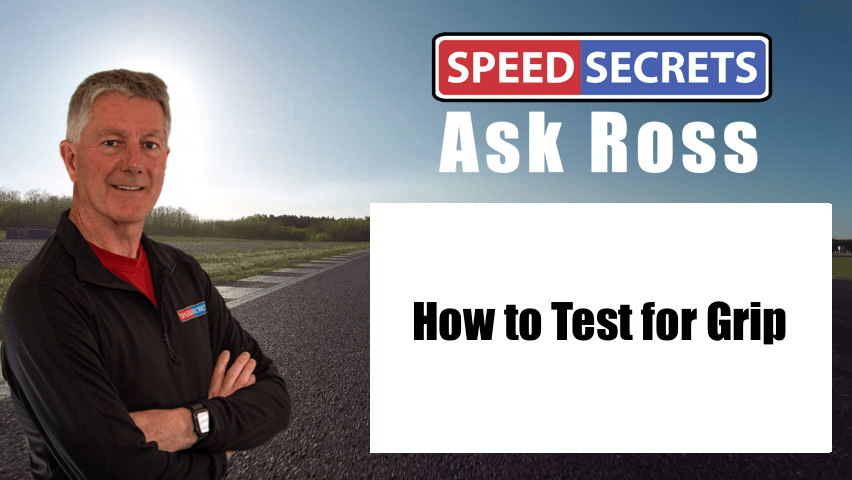 Q: “Can you clarify something for me? You wrote in your Speed Secrets 365 eBook, ‘While driving through a corner, turn the steering wheel more. You may need to do this rather quickly. If you slowly turn the wheel, and you’re not quite or just at the limit, the car will respond and tighten up the radius. But if you turn the wheel quickly, you’re likely to induce some amount of understeer, if even just for a moment. And that tells you something. It tells you where the grip level is. Relate the feel back through the steering wheel with the response to the “change of direction request” you’ve put into the steering.’
Q: “Can you clarify something for me? You wrote in your Speed Secrets 365 eBook, ‘While driving through a corner, turn the steering wheel more. You may need to do this rather quickly. If you slowly turn the wheel, and you’re not quite or just at the limit, the car will respond and tighten up the radius. But if you turn the wheel quickly, you’re likely to induce some amount of understeer, if even just for a moment. And that tells you something. It tells you where the grip level is. Relate the feel back through the steering wheel with the response to the “change of direction request” you’ve put into the steering.’
“What do I learn, and how, from the quick input understeer? I don’t get how that helps me understand how much grip is available. I’m guessing that maybe the answer is paying attention to how much understeer a quick input causes? Lots of understeer meaning that I was already close to the limit? I’m used to using slower turns of the wheel to see if I have more grip available than I am using. If the radius tightens, I was not at the limit. Is this not as valid a test as I think?”
A: Yes, if the radius tightens up, you probably are not at the limit. The point of turning the wheel quicker (but not silly quick!) is to actually make the car understeer; then you can use that by maintaining the understeer. If you slowly turn the wheel, and the car tightens the radius, you’re now not going where you want. Of course, if you turn the wheel quickly, and the radius tightens, you’re under the limit and you can carry more speed. The quicker turn also gives you the feedback quicker.
Of course, “quick” and “slow” are relative terms, so your slow may be my quick, or vice versa! But give it a try with a slightly quicker steering input.
What I mean is deliberately create understeer, and then manage it, even if that means letting the car continue to understeer. Yes, it’s part of the learning process, and yet there are times when you want the car to understeer a bit, so you may want to maintain the understeer so you know how to do it.
Sometimes, what you want to do is go into a corner at a speed where you know it’s going to do something – understeer or oversteer – because you’ll then be expecting it. If you go into a corner at just under the limit, then you spend much of the rest of the corner wondering when the car is going to go to under- or oversteer – and sometimes it surprises you. By deliberately making the car understeer, it won’t surprise you – you know what you’ve got. You can also deliberately make the car oversteer on corner entry, but that’s usually more challenging to control than understeer is.
I’m not a golfer, but years ago, I read a book about learning to improve one’s golf game. In it, the author suggested that if you tend to hook the ball, go to a driving range and deliberately make the ball hook. By doing so, you learn what really causes you to hook the ball, and then you can change. This is different from how many golf pros approach a player who hooks the ball. What they do is have the player change their stance or grip, and even if the player makes improvements, they don’t know why – and sometimes the hook comes back. The first scenario is the same approach I take with drivers I coach.
I will admit that this is one of those things that is much easier to communicate in person!

